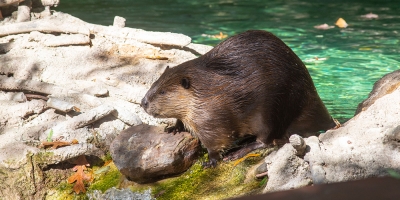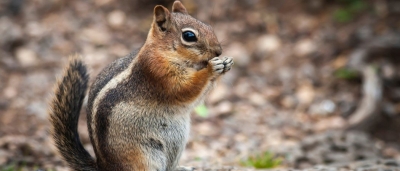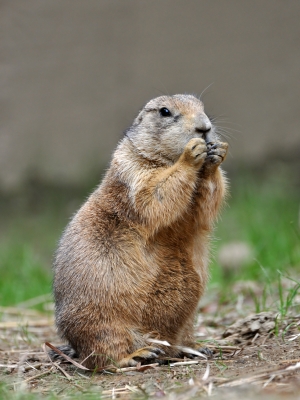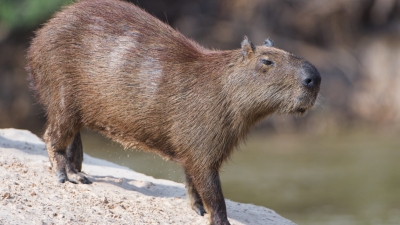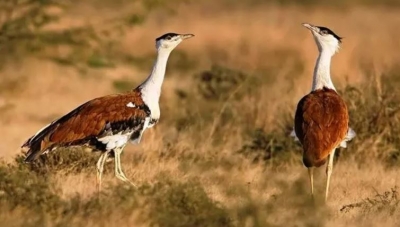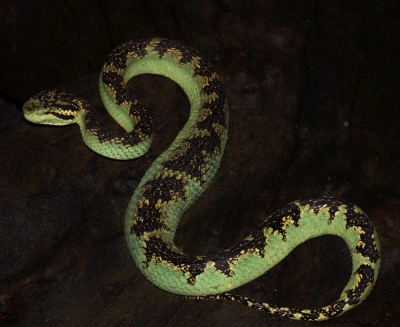What does the porcupine look like?
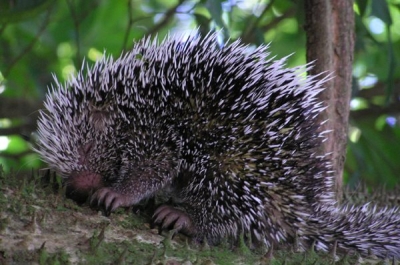
The Porcupine looks most like a prickly beaver! Its long strands of brown hair looks soft, but thousands of quills are tucked inside. The longest quills are found on their back and behind, while the shortest ones are on their face. Each quill is hollow – it is yellowish in colour, with a black tip and is covered in tiny barbs. Roughly 30,000 quills cover the whole body except for the stomach, nose and bottom of their feet.
The porcupine has a small face, small ears, short legs and a thick, small tail. Its flat feet and sharp, rounded claws make it well adapted to climbing trees. Porcupines rely heavily on smell as they are short-sighted.
Porcupines stick close to the trees. Beyond forests, you may find them alongside river undergrowth and maybe in the trees by a rocky ledge. They live in dens found in rock piles, caves, fallen logs and trees. Generally, they stay close to home leaving their dens for food — porcupines eat a variety of shrubs, bark, water plants and they love anything salty.
A peaceful animal, the porcupine will try to run away if it feels there’s danger. They’ll make loud chattering noises as a warning for predators to leave. If they can’t get away, their muscles tighten forcing their quills to come out. It will tuck its head in, lean forward and thump its back feet while swinging its tail as a warning. Sometimes loose quills fly out of the tail or if a predator tries to get too close, the quills will stick them. The quills are an amazing defense mechanism — when they get lodged in the skin, body heat makes the barbs swell, making it even harder and more painful to pull them out.
Animals like bears, bobcats, lynx, wolves and coyotes have also been known to be big predators, but the biggest of them all is the fisher. Thought of as the “expert” in hunting porcupines, the fisher will flip its prey onto its back to avoid getting pricked by the sharp quills.
Credit : Canadian Geographic
Picture Credit : Google
